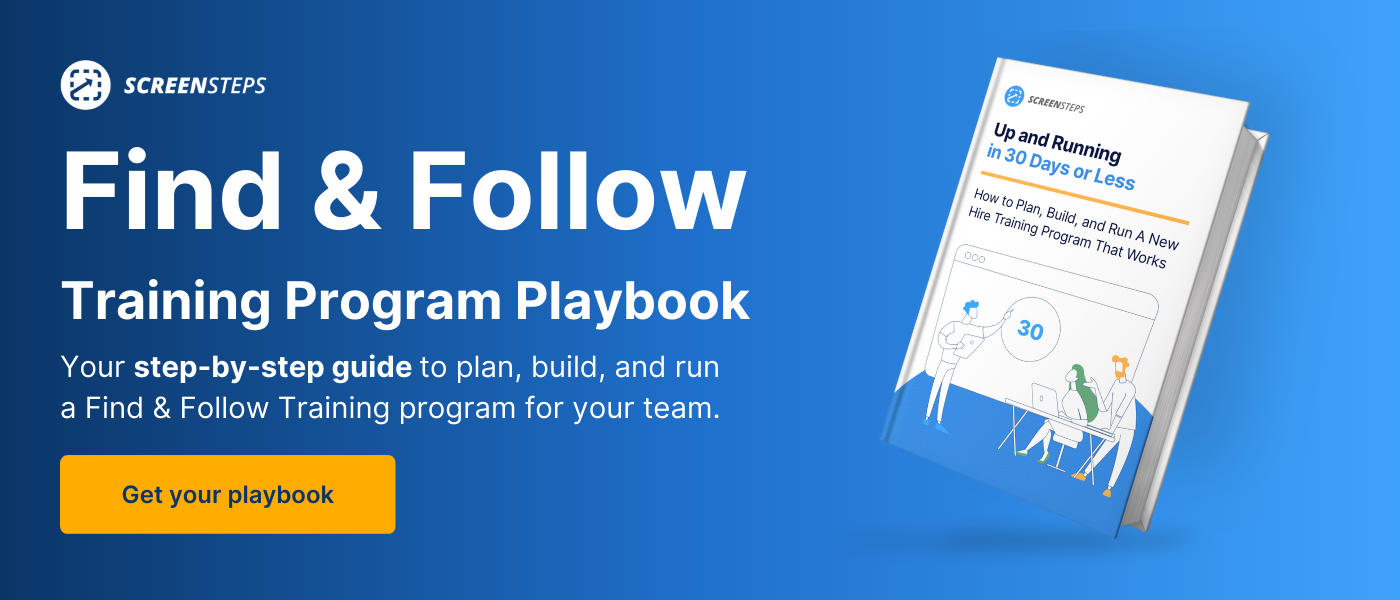Knowledge sharing is the practice of exchanging organizational knowledge within your company.
But what exactly does that mean?
Working for ScreenSteps — a knowledge ops solution — I’ve studied the many different ways to transfer knowledge from your experts to your employees. That’s through knowledge sharing.
In this blog post, you’ll learn more about what knowledge sharing is and the different types of knowledge sharing.
What is knowledge sharing?
Knowledge sharing is the process of exchanging information and skills between individuals or groups.
Another term commonly used for knowledge sharing is knowledge transfer.
In essence knowledge sharing is a fancy way of saying the information exchanged via various forms of training.
There are informal and formal ways of sharing knowledge. The approach to sharing knowledge is dependent on the type of knowledge you want to share.
3 types of knowledge businesses share
There are three main types of knowledge that organizations share with their employees.
1. Explicit knowledge
Explicit knowledge is your knowledge that can be easily documented. This knowledge is the facts and clearly outlined rules. It is cut and dry. Typically, these are your company’s policies, processes, and procedures.
This is the knowledge that enables employees to DO something.
Businesses share explicit knowledge through documented guides and other formal training practices, like lecturing, slide decks, etc.
2. Implicit knowledge
Implicit knowledge is any behaviors, habits, or practices that are part of your organization. Employees gain implicit knowledge as they use explicit knowledge. It is real-life and practical application of what they learned.
This is the knowledge that enables employees to understand something.
Employees learn implicit knowledge through hands-on experience. This could be through nesting, scenario-based training, or some other approach that uses practice activities in training.
3. Tacit knowledge
Tacit knowledge is individual wisdom and insights. It is knowledge a person gains through personal experiences.
Companies pass on tacit knowledge through mentorship programs like shadowing and one-on-one coaching. This allows new hires or learners to observe how things are done and follow that experienced worker’s example.
Another way to look at knowledge sharing
With ScreenSteps and the Find & Follow Framework, we simplify what types of knowledge you share with employees. We use two categories: foundational knowledge (knowledge that helps you know) and actionable knowledge (knowledge that helps you do). Learn more about foundational and actionable knowledge here.
Create a knowledge transfer plan to share knowledge more efficiently
Knowledge sharing can feel tricky at times. But with a clear strategy, it is easier to know the best approach to sharing different types of knowledge. The key is to have a knowledge transfer strategy.
Need help developing a knowledge transfer strategy?
Download this free guide on the Find & Follow Framework. The Find & Follow Framework is a methodology for transferring knowledge.
Companies who have used Find & Follow to create their knowledge transfer strategy can train their employees in 30 days or less. Plus, employees are more confident and can work independently after training without supervisor support.
The step-by-step playbook will show you how to create your own Find & Follow program to transfer knowledge faster.



